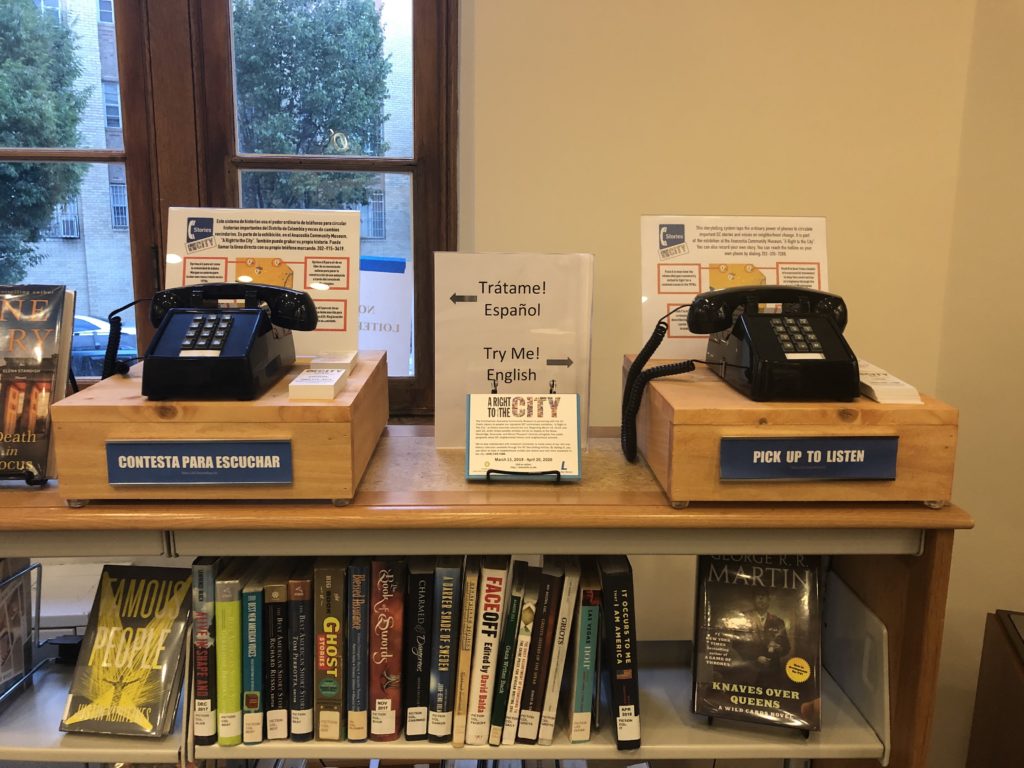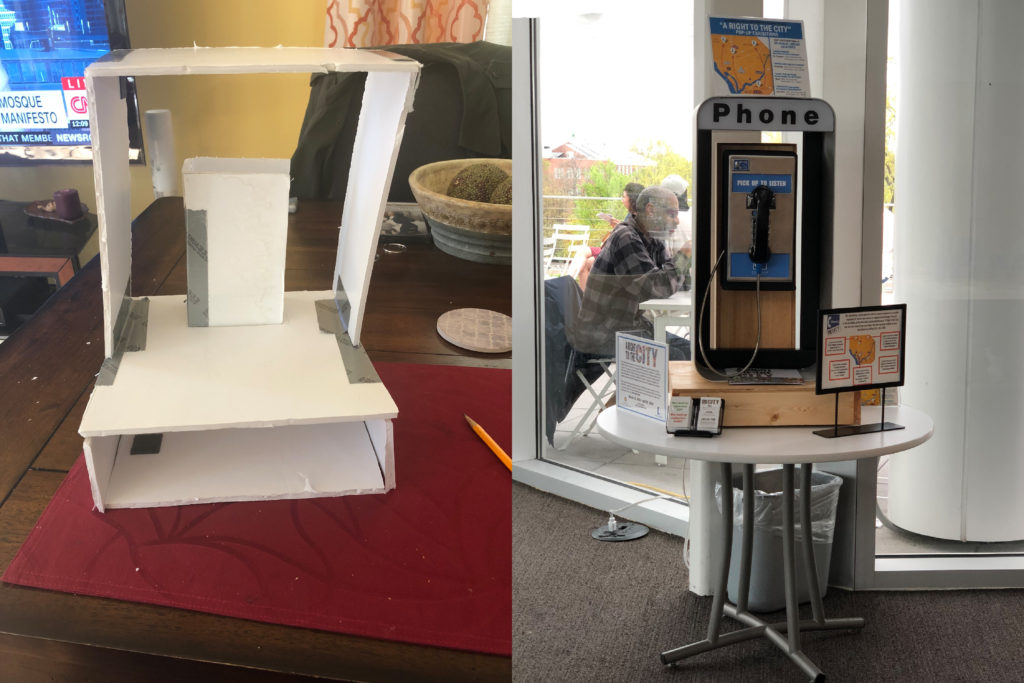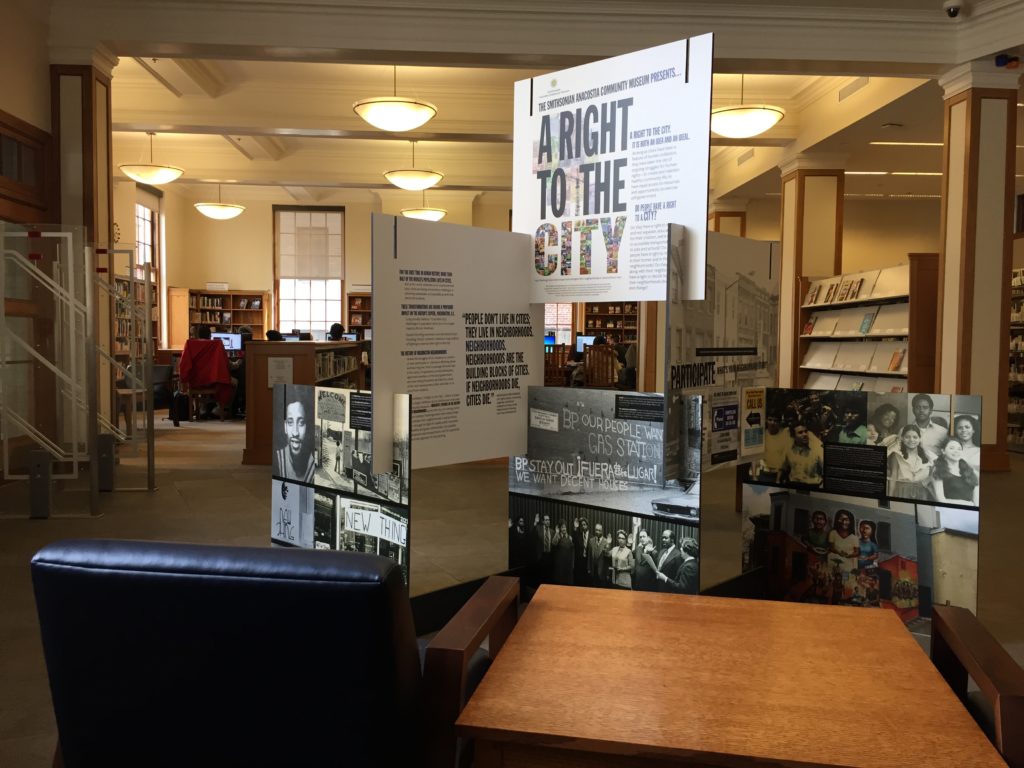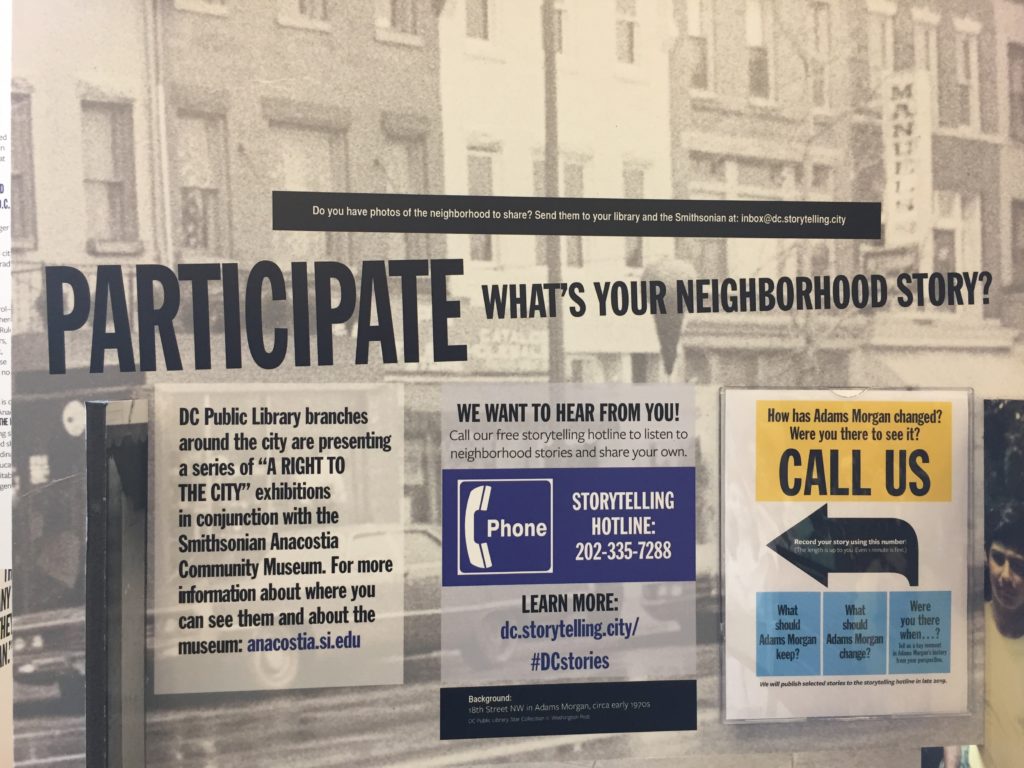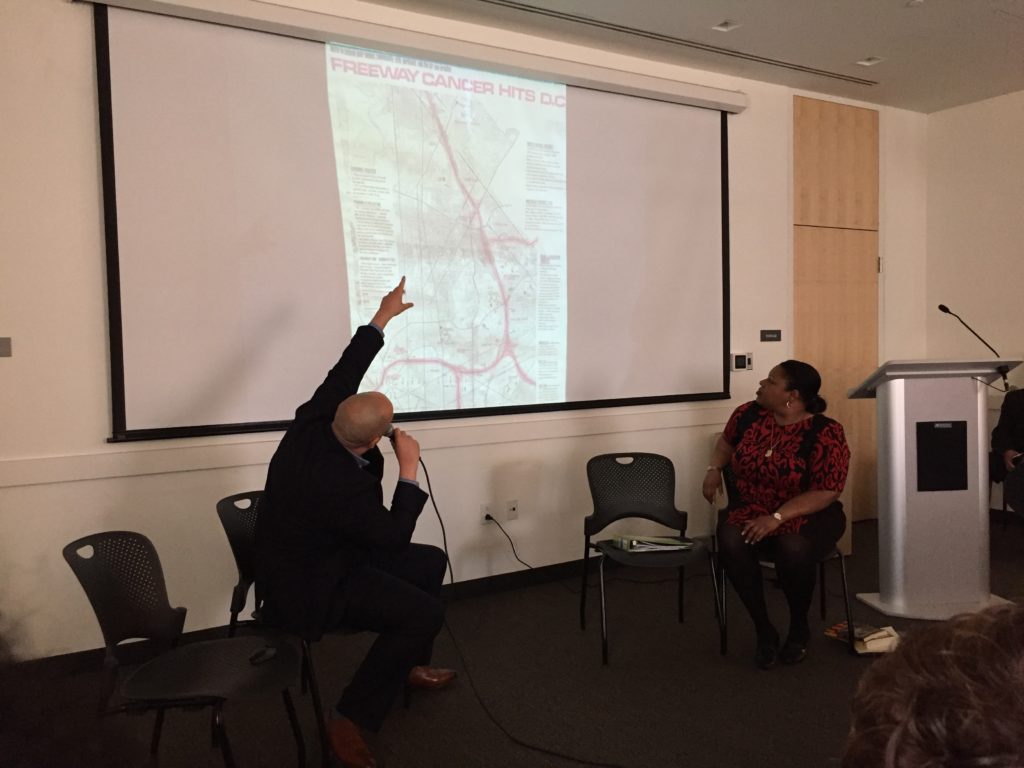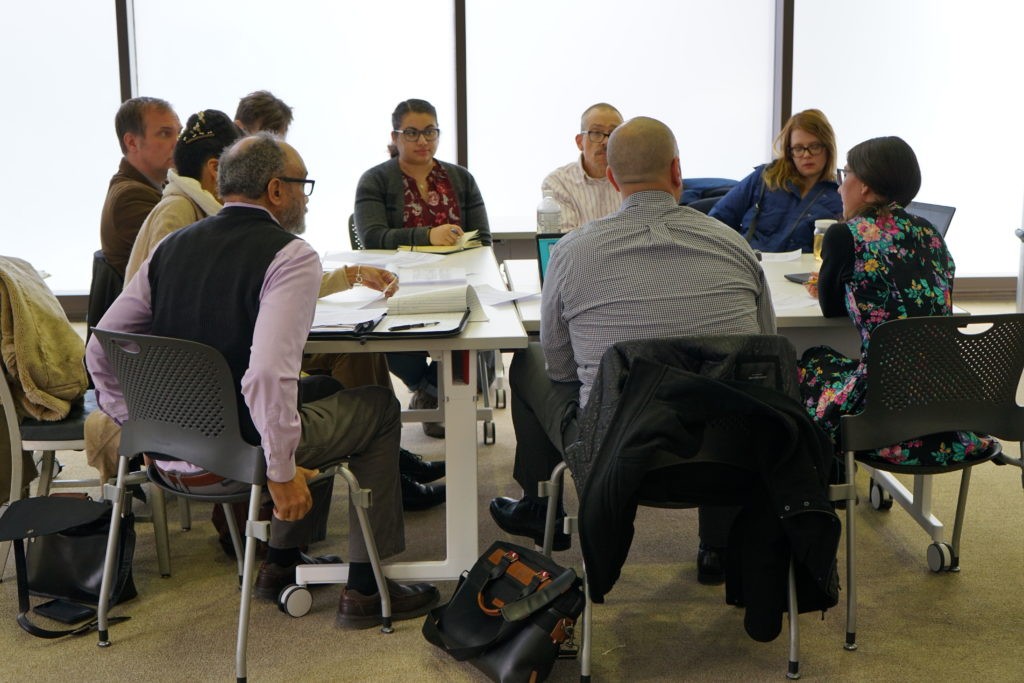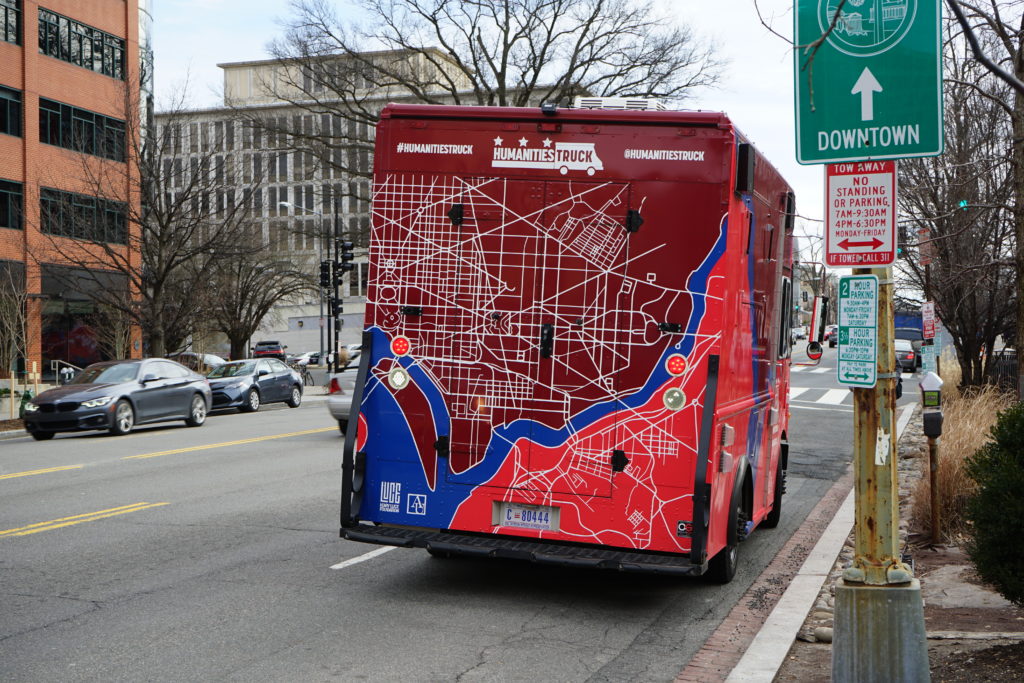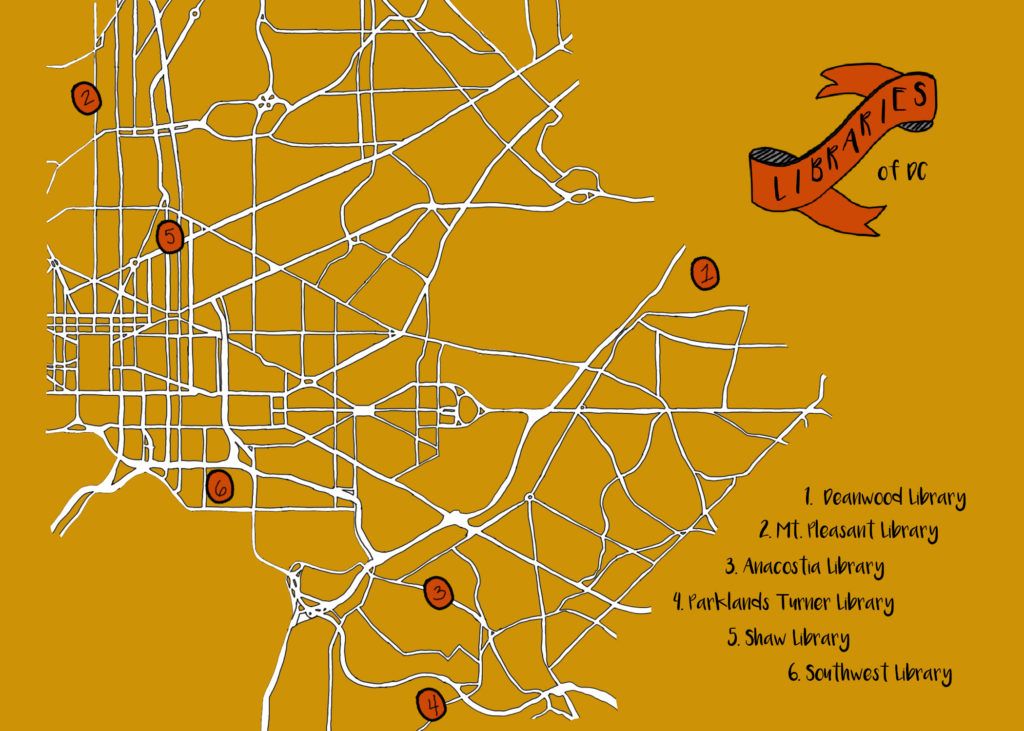
How could a truck spur digital experiences, especially during a pandemic? This was our third year for experiments at Adams Morgan Day, the longest-running neighborhood festival in DC. We knew things would be different, both for the pandemic and the immediacy of the protests around the murder of George Floyd.
We chose a hybrid approach that combined physical media (prints, signs, fliers, and video) with three kinds of digital interactivity: (1) mural hunt game; (2) trivia map activity; and (3) audio tour. Along the way, we tested our new game engine for cities, Hive Mechanic.
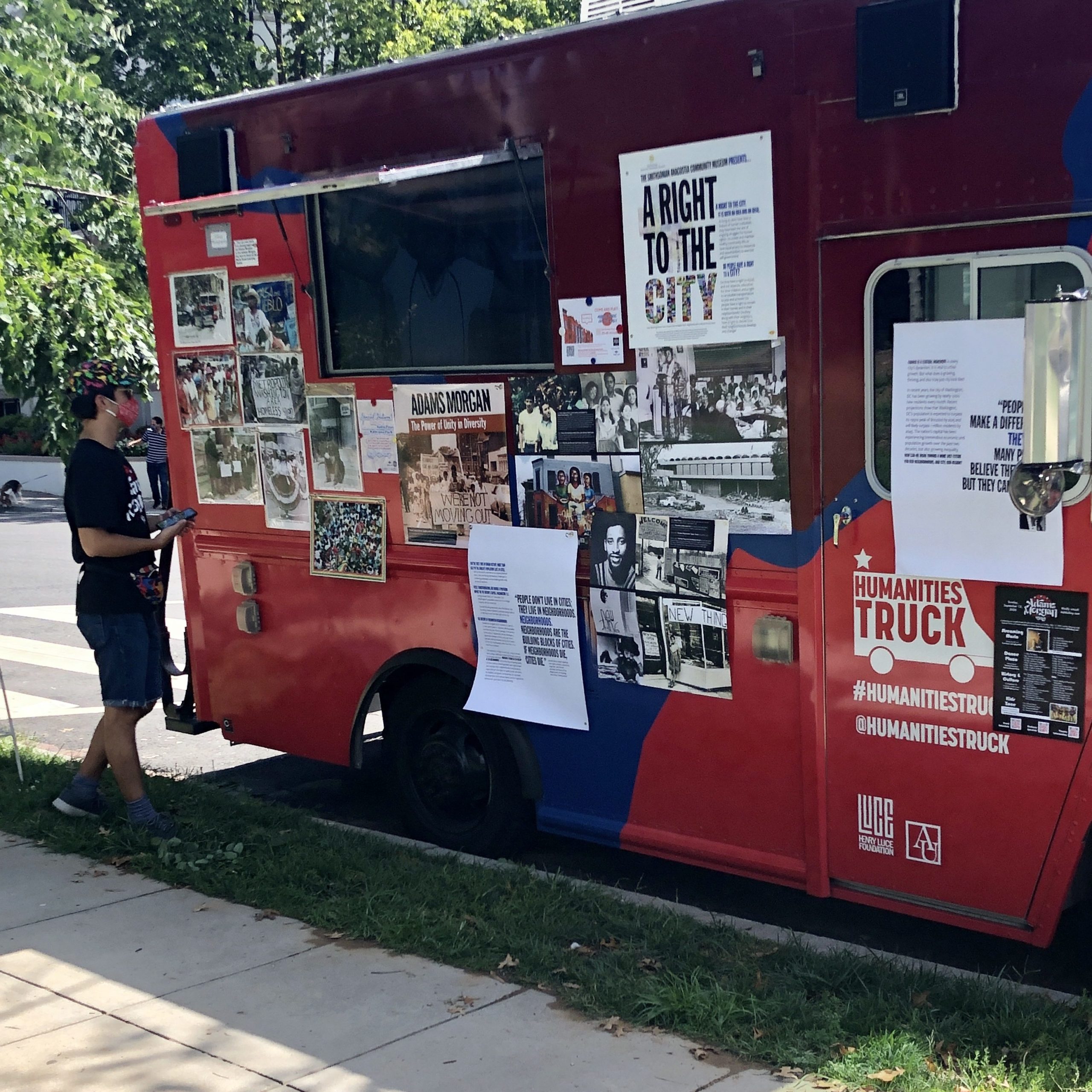
Photo Credit: Hazel Arroyo
Humanities Truck as a Socially Distant Hub: Balancing Curated Content and Local History
We took several steps to use the Humanities Truck in a socially distant way, while still showcasing content from the Smithsonian and DC Public Library. First, we closed the interior to the public, and posted all materials to the exterior. Second, we positioned the truck so that the back was visible from all sides of an intersection. Normally the streets are closed to cars for Adams Morgan Day, but for the pandemic the city requested we avoid drawing crowds, per se. We used the back of the truck to hang signage about the larger day — which proved surprisingly effective; on more than one occasion, we overheard passersby commenting, “Oh, that’s right; AdMo Day is today.”
For content, we had historic prints from Nancy Shia, content from the Smithsonian’s exhibition “A Right to the City” focused on Adams Morgan, fliers for the audio tour and mural hunt, and a video running on the outdoor monitor with additional content from “A Right to the City.” Nancy’s work emerged as a real crossover, since her photographs were also in some of the posters for “A Right to the City” and in the video.
In part, the truck served as a theatrical prop to spur digital interactions. Similarly, our print media served as a starting point for more in-depth digital activities. Selfies and social media were in turn generated by our activities.
Our New Scavenger Hunt: Murals and Activist Art

Following the murder of George Floyd, we were eager to highlight protest art as a longstanding tradition in the neighborhood. We were recruited to make this activity by Margaux Granat, the History and Culture content organizer for AdMo Day 2020. We were thrilled to have her join as a co-designer.
The final game (“Mural, Mural, on the Wall”) was a scavenger hunt-style game that guides players physically around the neighborhood, showcasing the murals and protest art along their path. Participating in the game automatically enrolled players in a raffle where the winner won a shirt designed by a local artist. (The prior year we had tested the raffle as a driver of activity, but this year it would be secondary.)
For recruiting, we assumed many players would already be enthralled by the art and history of the neighborhood (i.e., significant extrinsic motivation). The hunt itself is driven by a narrative that is written from the perspective of Margaux and is embedded with riddles, clues, and copious emojis. The playfulness of walking around and taking pictures with beautiful pieces of art was at the center of our experience goal.
To make people aware of the game, we used a combination of online marketing (thanks volunteers for Adams Morgan Day 2020!), and physical fliers that were hung at the truck and around the neighborhood. In retrospect, we would’ve liked to have used more 3-foot sandwich boards, and moved the truck to different intersections throughout the day.
Piloting an Audio Tour from a Local Historian

Graphic Design Credit: Meagan Couture
We also tested an “audio-plus-photographs” collaboration with Eddie Becker, a local historian who runs tours of the neighborhood. His tours frequently highlight slavery, institutional segregation, bank red-lining, the riots and police occupation of the 1960s, immigrants, housing displacement, and gentrification from the 1980s through present day. Eddie was interested in making his tours work for a socially distant audience.
Our audio tour centered on Kalorama Park, where players might pick a bench and listen on their own phones. The twist is that our hotline also sent historic photos to callers phones, timed to Eddie’s voice. To create the tour, we had Eddie record the audio and we put it together into a hotline format, something we’ve had a bit of practice designing and operating.

Return of the Adams Morgan Trivia Map
As in previous years, the Adams Morgan trivia map made a return. Hundreds of postcards were distributed to local businesses in advance of Adams Morgan Day. The map was originally created to be deliberately evergreen to distribute quality content for years to come. We also had the cards at the Humanities Truck.
Challenge: Getting the Word Out

Our biggest challenge in the pandemic was getting the word out — without overdoing it. Normally the closed streets do all the work for us. But this year, despite being featured in numerous radio and newspaper stories, there was hardly any foot traffic. Instead, the nearby park served as the draw — with dozens of people going in an out every fifteen minutes.
For live recruiting, the attention and visibility of the Humanities Truck was powerful in physical space. At the same time, we feel that we missed an opportunity by not including sandwich board signs as part of our strategy. With so many activities, the side of the Humanities Truck became a bit cluttered. In retrospect, it would have been great to use the sandwich boards to bring attention to each of the interactive experiences, allowing the truck space to be dedicated for the video and physical content (“A Right to the City” content and Nancy Shia’s prints). Another idea that occurred to us afterward was to offer more of a “menu” of activities with time estimates for each one, and thereby offer a clearer vision of what each activity might involve for choosy participants.
This post was contributed by Hazel Arroyo, a professional game designer and member of The Playful City Lab.

